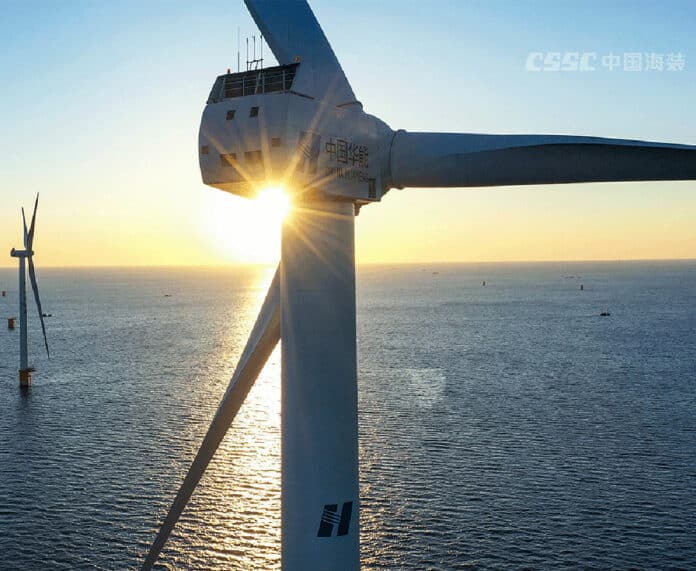CSSC Haizhuang Wind Power, a subsidiary of China State Shipbuilding Corporation (CSSC), has unveiled nacelle for what would be the world’s largest and most powerful wind turbine, an 18-MW product that tops the recent launching of a 16-MW turbine developed by other Chinese companies.
The H260-18MW offshore wind turbine prototype was unveiled at an event in the Dongying City industrial park in China’s Shandong province last week. The prototype will feature a 260-meter-diameter rotor that will power a modularized medium-speed geared drive train and permanent magnet generator.
The new turbine is larger than those from other Chinese companies, such as China Three Gorges, Goldwind, and MingYang. It is also more powerful than current models from Siemens Gamesa, Vestas, and General Electric.
The company said the new turbine has 128-meter SuperBlade+ blades featuring load-reducing pitch control. These blades have a sweep of 53,000 meter-square, which is equivalent to the area of seven football pitches.
CSSC Haizhuang highlighted that they designed the turbine to feature a power train “with requirements of balanced load, flexible matching of generator system and common blade model.” The concept uses a “holographic sensing system” for overall load-reduction and control technology for variable pitch and torque. It is supported by multi-source online monitoring to curb blade flutter or the amount of aeroelastic instability caused by the combination of vibration and pressure distributions on the blades by 10%. The design is also expected to minimize vibrations in the turbine’s tower and foundations by 50%, according to the CSSC Haizhuang.
“The adaptive power increasing control technology improves the power generation capacity by 3% for every turbine,” CSSC Haizhuang said. A single unit will be able to produce more than 74,000 MWh of clean electricity per year, which can meet the annual electricity consumption of 40,000 households, the company said.
The higher output of the H260-18.0 would cut the number of units needed for a 1GW project by 13% compared to the installation of its 16MW model, according to CSSC.
The new wind turbine model was developed with “independent IP [intellectual property] rights, which improved the nationalization rate of [the] turbine.” The company said 80% of the design’s components, including the blade, gearbox, and generator, have been sourced from within the group.
“This will ultimately improve the manufacturing level of the Chinese wind equipment industry, leading [to] the industrial upgrading [and] bringing significant social and economic benefits and embracing a broad prospect of industrialization [in the country],” the company said.
